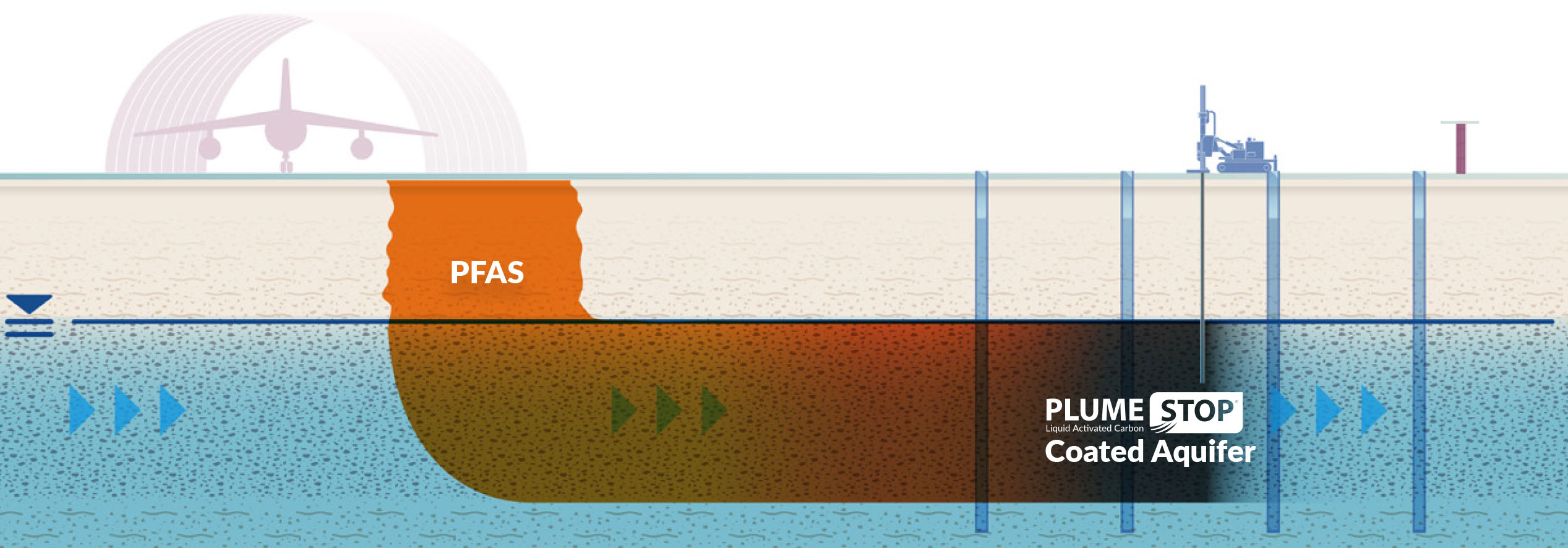Advanced Methods for Effective PFAS Contamination Removal
The consistent challenge of PFAS contamination necessitates the exploration of innovative removal approaches that can successfully address these unsafe materials. Ingenious modern technologies, such as innovative oxidation processes and various adsorption strategies, have become appealing remedies in mitigating PFAS from impacted settings. Moreover, the role of governing structures in shaping these innovations can not be neglected, as they dictate the speed and instructions of removal efforts. As we evaluate these sophisticated methods, it becomes crucial to evaluate their practical applications and the more comprehensive effects for environmental wellness and policy.
Understanding PFAS Properties
Although per- and polyfluoroalkyl substances (PFAS) have actually been widely utilized in different commercial and consumer products because of their one-of-a-kind homes, their perseverance in the environment postures considerable difficulties to public health and wellness and safety. PFAS are a group of synthetic chemicals characterized by a carbon-fluorine bond, one of the best chemical bonds understood, which adds to their phenomenal security and resistance to destruction. This stability permits PFAS to gather in the environment and living microorganisms, leading to potential negative health and wellness results.
These exact same properties contribute to their ecological perseverance, as PFAS do not quickly break down with natural procedures. Comprehending the chemical residential or commercial properties of PFAS is vital for developing efficient approaches to take care of and reduce their environmental influence.
Cutting-edge Removal Technologies
The perseverance of PFAS in the setting has actually spurred the advancement of ingenious removal modern technologies focused on effectively eliminating these contaminants from influenced ecological communities. Among one of the most appealing techniques are sophisticated oxidation processes (AOPs), which utilize powerful oxidants to damage down PFAS substances into less dangerous substances. AOPs can be customized to target specific PFAS frameworks, boosting their efficacy.
Another arising technology is the use of adsorption media, such as activated carbon and ion exchange resins, which can uniquely catch PFAS from infected water. These products have revealed significant removal performances, although regular substitute and regrowth are required to preserve efficiency.
Membrane layer filtering methods, consisting of reverse osmosis and nanofiltration, are additionally acquiring traction in PFAS removal. These techniques can properly separate PFAS from water, supplying a feasible remedy for treating polluted resources. Additionally, thermal therapy methods, such as incineration, can decompose PFAS into safe results, though they need careful monitoring to regulate exhausts.
Collectively, these innovative removal modern technologies stand for significant innovations in the ongoing fight versus PFAS contamination, offering various methods to bring back damaged atmospheres and shield public wellness.

Bioremediation Techniques
Bioremediation strategies supply a promising approach to dealing with PFAS contamination by taking advantage of the all-natural capacities of bacteria to break down these consistent Read Full Article compounds (m270 waste management). This technique involves using germs, fungi, and other microorganisms that can metabolize or transform PFAS compounds into much less unsafe results
Recent improvements in molecular biology and environmental microbiology have improved our understanding of microbial areas and their potential duties in PFAS destruction. Scientists are actively discovering certain pressures of microorganisms, such as Pseudomonas and Bacillus, which article have actually demonstrated the capability to damage down particular PFAS compounds.
In situ bioremediation techniques, where bacteria are boosted straight in infected atmospheres, can be especially reliable. This method usually includes the application of nutrients or electron donors to promote microbial development and activity. In addition, ex-spouse situ techniques, such as bioreactors, enable regulated problems that can enhance degradation prices.
Regardless of the promise of bioremediation, difficulties stay, including the intricate nature of PFAS compounds and the requirement for substantial area testing - m270 waste management. Continued research and growth will be critical to improve these methods and assess their effectiveness in diverse environmental contexts
Adsorption and Filtering Methods
Addressing PFAS contamination usually involves using adsorption and filtration approaches, which are made to remove these persistent chemicals from water and dirt. Among the various strategies, triggered carbon adsorption is extensively made use of due to its high area and porosity, enabling reliable trapping of PFAS particles. Granular triggered carbon (GAC) systems are specifically favored for treating big quantities of infected water, while powdered activated carbon (PAC) can be utilized for smaller-scale applications.
Ion exchange resins additionally show pledge in PFAS elimination, operating by trading PFAS ions with much less dangerous ions in the water. This approach has demonstrated efficiency in focusing PFAS substances, facilitating their succeeding removal. Additionally, membrane filtration strategies, such as reverse osmosis and nanofiltration, run by using semi-permeable membrane layers to different PFAS from water, properly reducing their concentrations.
While these techniques work, they have to be very carefully chosen based upon the certain PFAS substances present and the ecological context. Continuous improvements in products scientific research and engineering are leading to the development of unique adsorbents and purification systems that boost elimination efficiencies and reduce operational prices, thus improving general removal initiatives.
Regulatory and Policy Considerations
How can effective governing structures improve the monitoring of PFAS contamination? Thorough policies are important to guarantee a worked with and robust feedback to the challenges positioned by per- and polyfluoroalkyl materials (PFAS) Rules can develop clear standards for tracking, reporting, and remediating PFAS-contaminated websites, cultivating liability among markets and public entities. (m270 waste management)

In addition, financial motivations and gives can be incorporated right into policies to motivate the adoption of sophisticated removal technologies. Policymakers need to also focus on r & d, making sure that emerging approaches for PFAS removal are verified and applied effectively.
In addition, public recognition and engagement are essential elements of any regulatory technique, equipping communities to advocate for their health and wellness. Ultimately, a well-structured governing environment will certainly not only improve the monitoring of PFAS contamination however additionally advertise sustainable methods that secure future generations.
Final Thought
In summary, the intricacy of PFAS contamination requires the adoption of sophisticated remediation techniques. Continued research study and growth in this field continue to be crucial to resolving the difficulties posed by PFAS contamination.